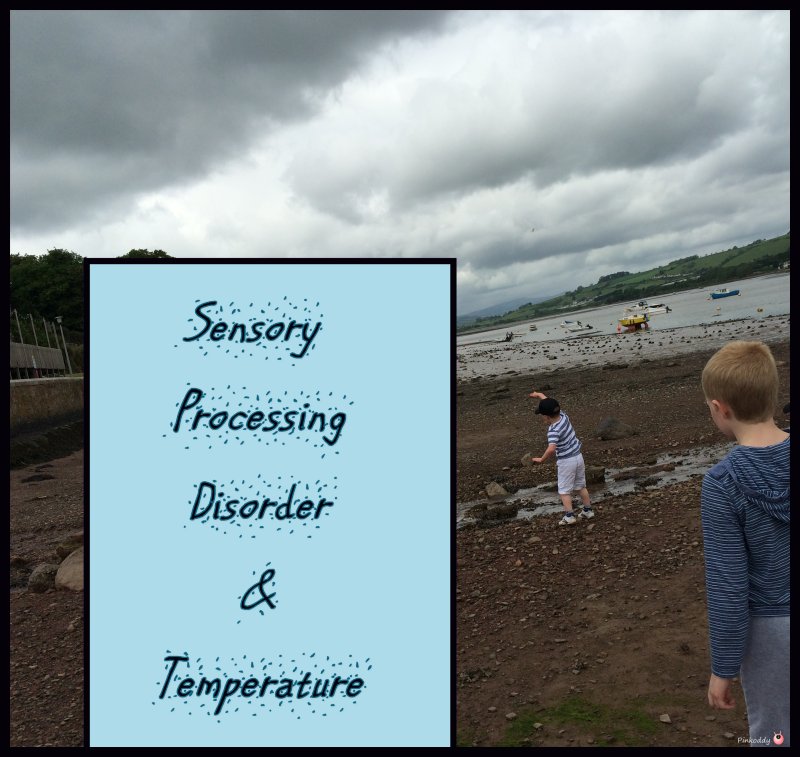Sensory Processing Disorder is when the brain struggles with the ability to filter out stimulus from the senses, which it does not need to function at that time. One of the senses that may be affected is that of temperature. However, sensory temperature issues are not often discussed in their own right. I believe that sensory temperature issues may just be the difficulty at work in many situations, therefore it is best to consider whether there is a problem. This is known as one of the problems with the interoceptive sense.
Sensory Temperature Issues with the Environment
Those with Sensory Processing Disorder may struggle for their brains to regulate the temperature of their bodies in the environment, in the same way neurotypical people do. For example those with sensory temperature difficulties may feel hot whilst others feel cold.
It may be that they refuse to wear a coat, or in more extreme cases no clothes at all. I have not been diagnosed personally, but often find that when others are cold I feel really hot. Sensory difficulties with temperature can mean that heat can be really unwelcome and make those affected feel ill. Personally my skin goes all tight and itchy, my head hurts, I feel all dizzy and like I cannot breathe. It may be that the individual with Sensory temperature issues is having trouble sweating to cool down (or the opposite they might sweat too much). Read more about Sensory Issues with Clothes.
It is important to make sure that their behaviours ARE sensory temperature related and not just behavioural (such as just not wanting to wear a coat), or other sensory issues such as due to tactile sensory issues (the coat feels uncomfortable due its texture). The main difficulties The Sensory Seeker has with temperature and environment are the fact that he finds snow too cold (but really wants to touch it) and cannot stand having sun lotion on.
Temperature could affect how those with sensory processing disorder/autism react in many situations because the room is either too hot or too cold – including when they are brushing their teeth, refusal to have a bath (which also needs to be the right temperature – some like it really hot, others really cold and others tepid!), eating dinner, going to sleep, etc – make sure that temperature is ruled out!
Sensory Temperature issues with Food
Whether food is the right temperature is not just an issue for those with sensory processing disorder. Have you ever been served something you found too hot or cold? You know that if it is too hot you can blow on it (or wait). That if it’s too cold it will need reheating you simply cannot eat it.
You also will appreciate that there will always be certain foods that you may prefer hot but will eat cold (in my case it is with pizza). The individual with sensory temperature issues is just the same, but may not have the same “tastes” as you.
Also because it is a problem with the brain regulating the sense of temperature, they may not like the temperature to be the same every time! So one day you may cook them scrambled egg and they may like it as soon as it’s cooked, yet another time it is deemed too hot and they wait until it is stone cold before they eat it!
We find that The Sensory Seeker is still developing an understanding of temperature (to regulate things himself) and sometimes needs persuading to try the food again (for example if it was previously too hot but now time has passed we know it will be cooler).
Ways to help with Sensory Temperature Issues
My advice would be to really get to know and understand the individual with sensory temperature issues. Ask yourself if it really is a problem, and why – are they going to get ill for example.
Think of ways you may be able to get around it for example, it is not very practical for the child to go out without any clothes on, but maybe you could find something very lightweight for them.
Consider whether clothing covers the body or not. Those who are easily cold may prefer long sleeves. I cannot stand long sleeves as I am easily hot. What I tend to do is wear layers, with a short sleeved vest top on the bottom (well above my underwear) so that I can easily adjust my temperature that way (quickly). I take a coat that can be easily stored in a bag if there is a risk of it raining. There are special clothes that can be bought to help regulate body temperature, otherwise I have heard that silk and bamboo materials are good. Of course you may be able to manipulate the temperature of the environment with heating and air-conditioning – but this may not suit others, and the individual with the sensory disorder may not like the noise (or feel).
Be patient – can you just wait for food to cool down? Could you reheat food, because they have said it is too cold when normally they like it cold? Somethings I think have to just be accepted as being “difficult” – The Sensory Seeker often asks for ice-cream but then finds it too cold to eat. We just let him try it every time. Maybe one day he will even get the association that ice-cream is cold (and he doesn’t like that).
Do you have any sensory temperature issues or solutions?
